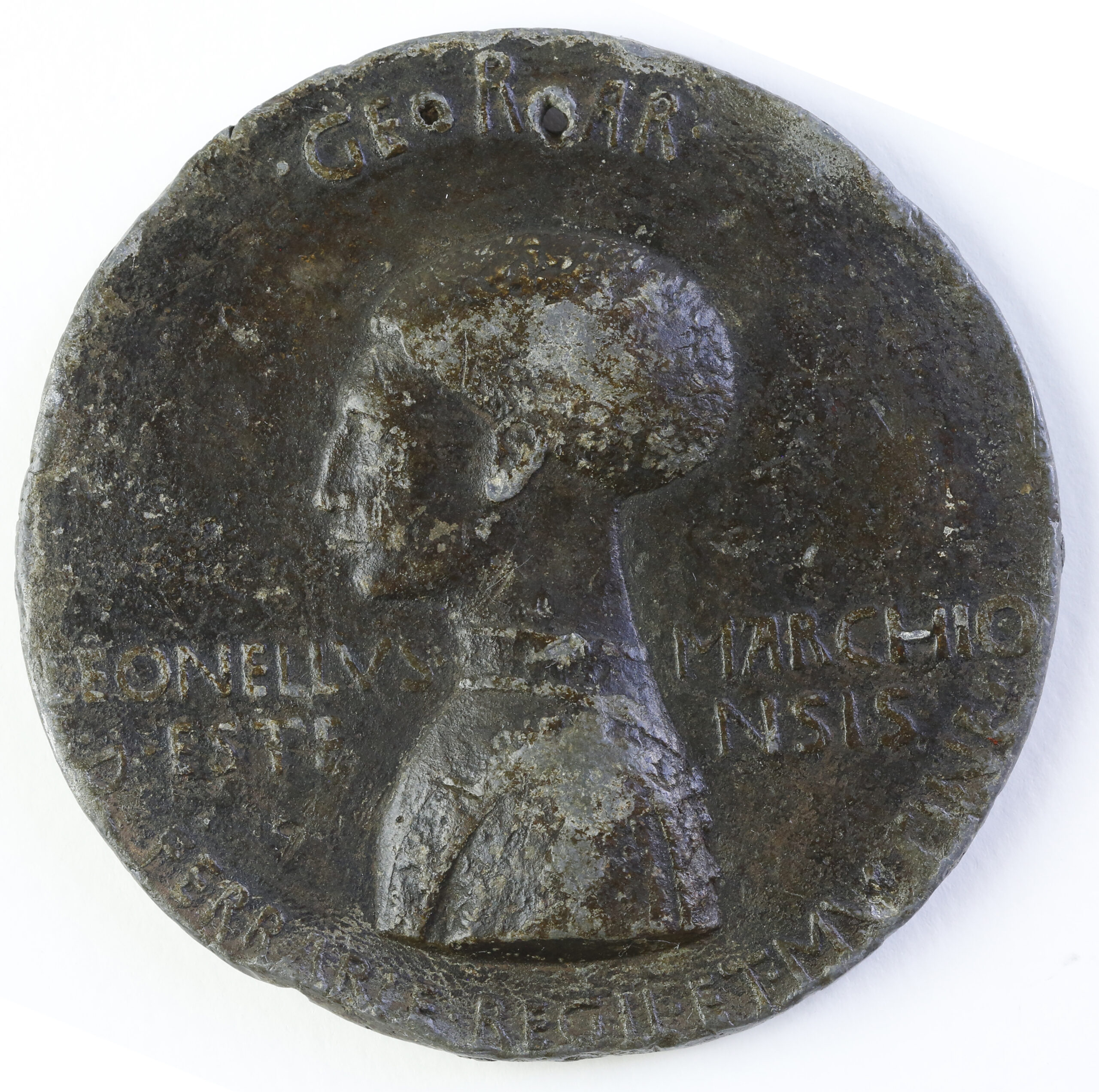The celebratory medal represented one of the possible ways of conveying the cult of the Sovereign’s personality and a message of power and strength in fact, if on the one hand it shows the physical portrait of the Lord and the indications of his titles, on the other it depicts through images and symbols his moral, civil and political qualities that he wanted to communicate to the outside world.
The representation of the effigy in profile has its roots in ancient Roman numismatics, as a manifestation of power and legitimisation of the social and cultural position of the Sovereign.
Leonello made extensive use of celebratory medals and Pisanello was the main creator, producing six between 1441 and 1445.
The recto of the medal depicts centrally the profile of Leonello facing left, of whom a large portion of the bust is visible, decorated with a splendid and meticulous floral work on the surcoat. Leonello’s face is characterised by precise physiognomic details such as the peculiar short, curly hair that highlights his straight neck and straight nose. The epigraphic elements are depicted horizontally on the sides of the bust and conclude by following the lower edge of the medal. The inscription reads ‘LEONELLVS MARCHIO ESTENSIS D FERRARIE REGII ET MVTINI’ while at the top are the letters ‘GE R AR’ whose translation is still debated. Two are the most accredited meanings: the first “GENER REGIS ARAGONIAE” could thus indicate the family relationship acquired with the King of Naples Alfonso of Aragona, through his marriage to his daughter Maria in 1444; while the other version interprets the letters as a contraction of the words “GENERALIS ROMANAE ARMATAE”.
The reverse of the medal shows a singular compositional richness in which many elements arranged on different perspective planes are included. The theme proposed by the artist is an allegory of conjugal love and this, together with the date engraved on the cippus M CCCC XLIIII, are elements that support the hypothesis that the medal was designed on the occasion of the Marquis’ second marriage to Maria of Aragona. The protagonists are an imposing lion, whose assonance with the name of the Marquis is explicit, tamed by a putto who shows the animal a musical sheet with which he will teach it to sing. The depiction alludes to how love can placate strength and elevate the human soul. The figures are set in a rocky landscape enriched by an eagle on the left, the undisputed symbol of the House of Este, resting on a tree branch, while in the centre a cippus is decorated with the image of a sail unfurled by the wind, the symbol of good fortune. On the right is the inscription ‘OPVS PISANI PICTORIS’, which leaves no doubt as to the authorship of the work.
A lead exemplar present in the Estensi Galleries in Modena is shown here.








